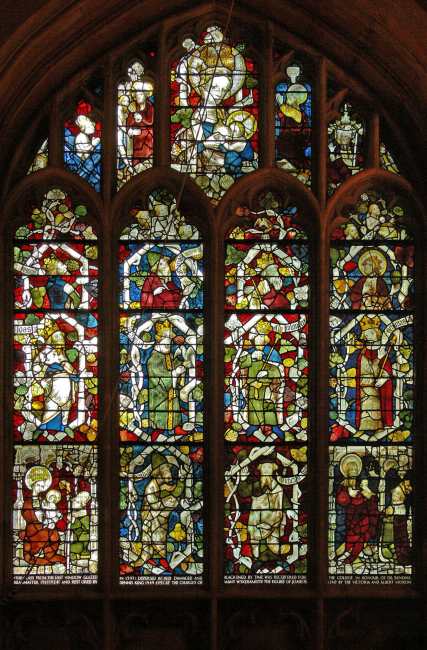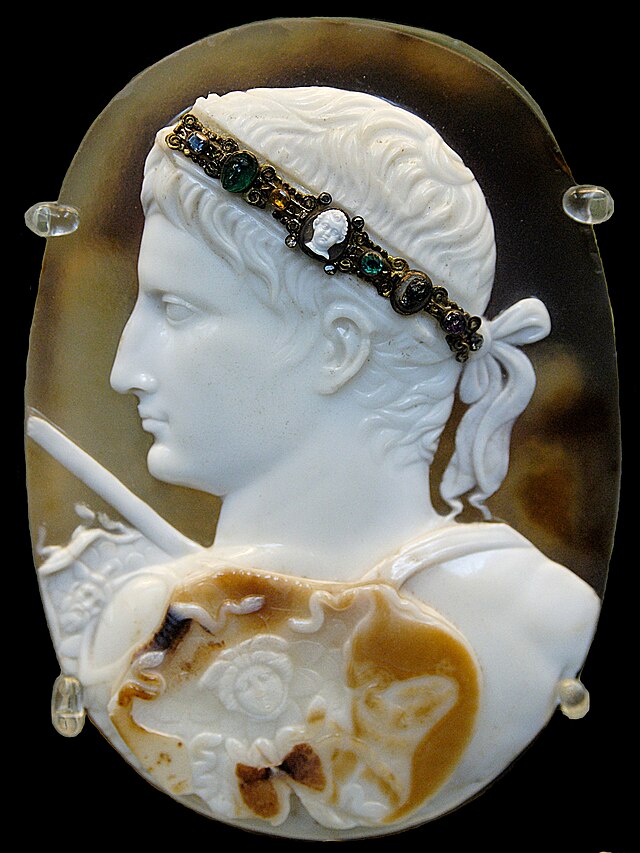This morning there took place in his home town of Newport in Shropshire the funeral of my Oxonian friend Steven Doody.
Steven was one of a group of valued male and female friends I made in Oxford in my more active years there. A generation or so younger than me we bonded through a similar world view, often through shared church going, and certainly through shared meals in pubs and especially one favoured Italian restaurant. I recall many happy hours spent with him, and especially his unstinting help to me as Churchwarden in organising, during a vacancy, the celebration of Easter at St Thomas’ Oxford in 2004.
Steven died at the beginning of this month aged only 46. As a memorial, and with the speaker’s permission, I am reproducing here the eloquent eulogy given at the funeral by Steven’s school friend and fellow Oxonian, Dr Roland Enmarch, who now lectures in Egyptology at Liverpool University.
Steven Doody
16.iii.1978 – 5.viii.2024
Eulogy
I would like to begin by offering thanks to Tranters funeral directors, and to Rev. Ward and the staff of St. Nicholas’ Church, for organising this opportunity today for us to come together to remember Steven Doody, and to celebrate his life.
And thank you all for coming here today, to show your love for our departed friend.
And may I say that all our hearts today are with Steven’s father, Dave, and his aunt, Mo, whose grief is great for the loss of a son (and nephew) of such extraordinary gifts ¬– of confidence, exuberance, great intelligence, and great love.
I hope I can do him justice in these few words.
So, where to begin? Well, Steven was a lover of tradition above all things, so let me be traditional and start at the beginning: I first met Steven Doody in 1989, when we both started at Adams Grammar School aged 11. Even then I think he may already have developed his trademark quizzical raised eyebrow and his uniquely mischievous way of arguing: – one of the earliest recollections I have of him was a heated argument we had over the correct way to spell the word ‘Britain’. I am fairly sure that, in purely orthographic terms, I was in the right – but I certainly wasn’t the one who won the argument!
Fortunately, our friendship survived this first trial. And with his gift of a prodigious memory, -combined with dedicated study, Steven would soon be winning many more arguments, more fairly. And his memory really was prodigious: after the 1992 general election he spent hours in the Big School library poring over Whitaker’s Almanack –– there no was no Internet Wikipedia in those days –– and he memorised not just all the MPs of the new UK parliament, but he was also actually able to quote from memory all their majorities as well. I know this – because Steven insisted that I test him, repeatedly!
Before long, he was achieving the same mental mastery of much of 19th and early 20th century British history, a period which frankly fascinated him, and for which he developed over the course of his life such a profound empathy: he could discourse learnedly for hours on any number of historical topics from this time, whether it be the Primrose League, the Second Irish Home Rule bill, Hedgers and Ditchers, or the question of tariff reform. He became a sure-footed master of the facts and the arguments, as well as the nuances. In later years, he wore his erudition rather lightly, but it remained a key part of who he was.
Perhaps inevitably, in 1996 Steven became the first pupil of Adams’ in many years to go to Oxford to study History. He had already proven himself a gifted public speaker, with his forthright contributions at school to the William Adams’ Arts and Debating Society - these were already the stuff of legend. However, it was at Oxford where Steven’s rhetorical talents took wing, and where he really honed the charisma and humour that would be the hallmarks of his whole life.
I remember being rather in awe of Steven at Oxford – he successfully adopted a larger-than-life personality, and seemed to make his whole existence into one giant artistic performance.
He became a favourite of the student gossip columns, where he was known as ‘Thirties Throwback’ - a reference to his sense of style, and his love of old-fashioned clothes. His wardrobe was of the very finest and most elegant tweeds and cords, while accounts of his going to Ascot in full morning dress placed Steven (to me, at any rate) in an impossibly glamorous world – a star in the Oxford firmament. The press loved his look too – who can forget his popularisation of wearing rubber ducks as a fashion accessory, or the wonderful headline ‘Let’s party like it’s 1899’?
As an undergraduate, Steven immersed himself in the world of student politics, serving in various elected capacities in the Oxford Union, and the Oxford University Student Union – but perhaps most notably he also managed to get himself elected as the leader of Oxford University’s Conservative Association – and strikingly he went on to swiftly lead that organisation to quite unprecedented levels of national celebrity, as some of you may well remember.
That was one side of his Oxford life – and Steven’s exoteric antics are perhaps the ones most people know best. But on a more profound level, Steven also had a very active inner life, to which perhaps fewer of us were privy. Here too, his Oxford years were crucial: in 1997, he first attended Sunday High Mass at Pusey House, and was instantly drawn to High Church Ritualism ¬– and its deep spiritual understanding – which went on to become cornerstones of his whole life.
As a terrible heathen, I may not be best placed to recollect Steven’s Pusey days. Fortunately, I have been helped here by another long-time friend and former congregant of Pusey House, John Whitehead - who sadly is unwell and cannot be here with us today. John tells me that he remembers Steven fondly as a generous and loyal friend, though he notes that Steven was a bit of a menace when swinging his incense-thurible during the mass….
It is only fair to add that Steven brought his love of fine clothes to his High Anglicanism: He was an authority on such things as the correct liturgical colours for Laetare Sunday, and he knew his biretta from his mozzetta from his zuchetto. In 2002, the highlight of his holiday in Rome was visiting Gamarelli the papal tailors, where he purchased episcopal purple socks (for himself), and a miniature biretta (for Tiny Bear, his teddy).
But more seriously, Steven drew a real and profound comfort from his High Anglican faith, in which he remained steadfast to the end of his life. Steven was a great believer in the power of prayer, and so at this point I should note that Fr. Barry Orford, of Pusey House, will be saying a requiem today on behalf of Steven - and Steven will also be remembered today at mass, by Fr. Alaric Lewis, in the church Steven attended for many years in Norwich, St. George’s Tombland. And I should also mention that many, many of Steven’s ecclesiastical friends have contacted me to say that they too have said masses, requiems and angeluses for Steven.
After completing his studies, Steven stayed on in Oxford – which he dearly loved – for some years, serving rather unexpectedly as the postmaster at St. Giles, a job he conducted with considerable flair before returning (as I think we all knew or hoped he would) to his true vocation in education. He became a teacher of History, first training in Liverpool where he is remembered with great fondness, and then working for many years at City College, Norwich, teaching sixth formers. Steven turned out to be a truly inspirational teacher – indeed his students successfully nominated him for an award for innovative teaching methods . . . which was wonderfully ironic, for such a determined traditionalist as Steven. Unfortunately, failing eyesight began to pose increasing problems for Steven, and so eventually he had to give up this role in which he had been so successful, and which he had accomplished with such enjoyment.
Of course Steven remained fascinated by history and its infinite complexities, and in his later years even talked about embarking on a doctorate, to undertake a comprehensive study of the Liberal Unionist party from 1886-1912. Sadly, his fragile health prevented him from achieving this aim.
As I draw to a close, I want to stress just what a special person Steven was, to so many of us here and further afield, who knew and loved him. He was a kind and generous soul, with a real gift for friendship: he had an easy way with people, effortlessly setting them at ease, and making them feel valued. His innate sense of life’s absurdities made him a natural comic, and he was adept at spreading mirth to everyone he encountered. He had a mischievous, transgressive sense of humour, always delivered with a raised eyebrow and a knowing smile.
Steven Doody was a lover of life, and he lived his life to the fullest. He followed his star, which shone brightly, if alas all too briefly, in this world. Let us hope for a better world to come.
Steven, you will not be forgotten. Rest in peace, my friend.







